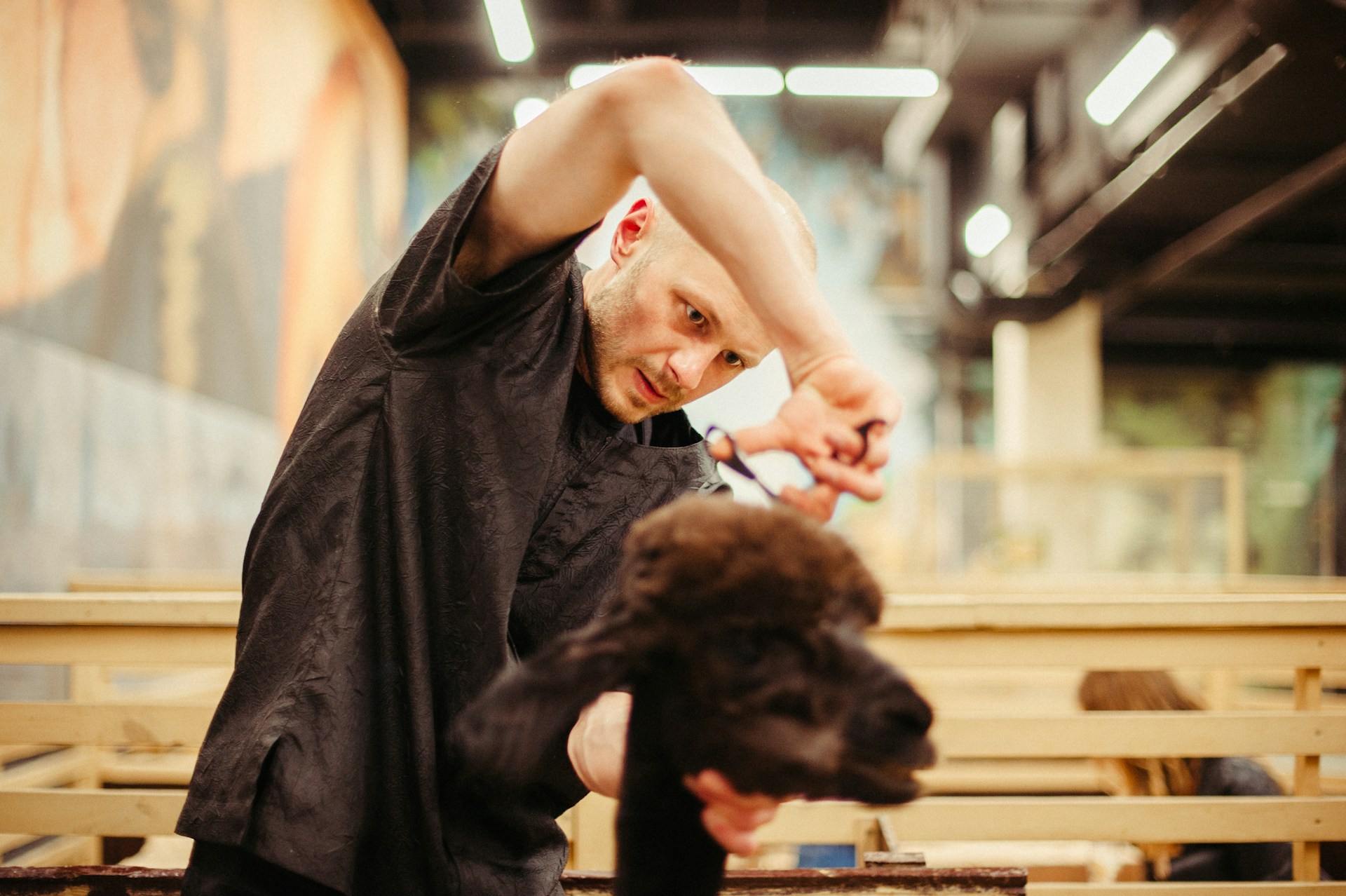Can You Cut a Male Dog’s Pee Hair?
One question that often arises is, “Can you cut a male dog’s pee hair?” Welcoming a male dog into your home comes with the joy of companionship, but it also involves the responsibility of proper care, including grooming.
This guide aims to provide a thorough exploration of the topic, shedding light on the anatomy of male dogs, the purpose of pee hair, common grooming issues, and the step-by-step process of trimming.
The Anatomy of Male Dogs and Pee Hair
Understanding the anatomy of male dogs is crucial to grasp the significance of pee hair. Unlike female dogs, males have a sheath covering their genitals, and the surrounding fur, often referred to as pee hair, serves a specific purpose.
The Purpose of Pee Hair in Male Dogs
Pee hair in male dogs has a functional role. It helps protect the sensitive genital area from external elements, prevents irritation, and contributes to maintaining hygiene. However, when this fur becomes too long or tangled, it can lead to various issues, necessitating grooming.
Common Grooming Issues for Male Dogs
1. Matted or Tangled Hair
Long and neglected pee hair can easily become matted or tangled, causing discomfort and potentially leading to skin issues.
2. Hygiene Concerns
Excessive pee hair may trap dirt and urine, creating an environment conducive to bacterial growth, ultimately affecting the dog’s overall hygiene.
3. Urinary Tract Infections
In some cases, untrimmed pee hair can contribute to urinary tract infections, as bacteria may ascend into the urethra.
Related Posts :
Let’s Understand How To Keep Cats Away From Peace Lily? 10 Facts
Let’s Understand Top 15: Cat Sleeping Above My Head Meaning Spiritual
Let’s Understand Do Cats Get Horny? TOP 10 FACTS
Let’s understand Is Pura Safe for Cats?
The Grooming Process for Male Dogs
Tools Needed
Before attempting to trim a male dog’s pee hair, gather essential grooming tools, including scissors or clippers, a comb, and pet-safe grooming products.
Step-by-Step Guide
- Prepare Your Dog: Familiarize your dog with the grooming process by allowing them to sniff and explore the grooming tools. This helps reduce anxiety.
- Brush the Hair: Use a comb to gently remove any tangles or mats in the pee hair.
- Trimming the Hair: With steady hands, carefully trim the hair around the genitals, ensuring not to cut too close to the skin to avoid injuries.
- Check for Redness or Irritation: After grooming, inspect the area for any signs of redness or irritation, which could indicate an underlying issue.
- Reward Your Dog: Positive reinforcement, such as treats or affection, helps create a positive association with grooming.
Potential Challenges and Risks
1. Injury Risks
Grooming around sensitive areas poses the risk of accidental cuts or nicks. Caution and a gentle touch are crucial to prevent injuries.
2. Psychological Impact
Some dogs may find grooming distressing. Gradual introduction and positive reinforcement can help alleviate stress.
When and How Often Should You Trim Pee Hair?
The frequency of trimming depends on the dog’s breed, coat type, and individual needs. Regular checks and grooming every few weeks are generally advisable.
Consulting with a Professional Groomer
If you’re unsure about grooming your male dog’s pee hair or encounter difficulties, consulting a professional groomer is a wise decision. They have the expertise to handle grooming with minimal stress for the dog.
DIY Grooming vs. Professional Grooming
Consider your dog’s temperament, your grooming skills, and the specific needs of your dog when deciding between DIY grooming and professional grooming services.
Breed-Specific Considerations
Certain breeds may require more frequent grooming or specialized care for their pee hair. Researching breed-specific grooming requirements is essential.
Grooming Tips for First-Time Dog Owners
First-time dog owners may feel apprehensive about grooming. Patience, positive reinforcement, and seeking advice from experienced dog owners or professionals can ease the process.
Addressing Common Misconceptions
Dispelling common myths about grooming male dogs helps owners make informed decisions and provide the best care for their pets.
The Emotional Bond Between Dogs and Their Owners
Grooming is not just a physical care routine; it’s also an opportunity to strengthen the emotional bond between dogs and their owners. Positive interactions during grooming contribute to a trusting relationship.
Related Posts :
Let’s Understand How To Keep Cats Away From Peace Lily? 10 Facts
Let’s Understand Top 15: Cat Sleeping Above My Head Meaning Spiritual
Let’s Understand Do Cats Get Horny? TOP 10 FACTS
Let’s understand Is Pura Safe for Cats?
Frequently Asked Questions (FAQs)
Q: Can cutting a male dog’s pee hair cause pain?
- A: When done carefully and with the right tools, trimming pee hair should not cause pain. However, caution is essential to avoid any accidental injuries.
Q: How do I know if my dog is uncomfortable during grooming?
- A: Watch for signs of stress, such as panting, trembling, or attempts to escape. If your dog seems distressed, take breaks and proceed gradually.
Q: Can I use human grooming products on my dog?
- A: No, human grooming products may contain ingredients harmful to dogs. Use pet-safe grooming products recommended by veterinarians or professional groomers.
Q: Are there specific grooming techniques for different dog breeds?
- A: Yes, different breeds may require specific grooming techniques based on their coat type and length. Research breed-specific grooming recommendations or consult a professional groomer.
Q: How often should I groom my male dog’s pee hair?
- A: The frequency depends on the dog’s breed and individual needs. Generally, grooming every few weeks is advisable, but regular checks are crucial.
Conclusion
In conclusion, understanding the importance of grooming for a male dog’s pee hair is integral to their overall well-being. By approaching grooming with care, patience, and the right tools, you can ensure your canine companion remains comfortable and healthy.
Whether you choose DIY grooming or seek professional assistance, the goal is to maintain a positive grooming experience that strengthens the emotional bond between you and your furry friend. Embrace the responsibility of grooming with confidence, knowing that it contributes to a happy and healthy life for your male dog.
Remember, the information provided here is a guide, and individual dogs may have unique grooming needs. Always observe your dog’s reactions and consult with a veterinarian or professional groomer if you have concerns about their grooming routine.


